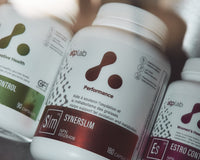Metabolic acidosis: The importance of PH balance for building muscle & burning fat.

You can lead a horse to water, but you can’t make it drink. It’s a lot like getting a bodybuilder to eat their veggies – you can provide them with all the health benefits and even how it will improve their physique, but getting them to actually eat them, well that’s another story. All I can hope is that with objective and slightly informative articles like this one, clients will eventually catch on and get the message – establishing an optimal pH balance is key to achieving a shredded and muscular physique.
The Problem
Bodybuilders and athletes typically eat a lot of foods that can produce a lot of acid in the body such as proteins, starches and various grains and not a lot of foods that neutralize it such as fruits and vegetables (see list in glossary below for some more common acid-forming foods). The end result – the body and muscle tissues shift into an acidic state or what most experts call metabolic acidosis – which can wreak havoc on your tissues and create an unfavorable environment in the body that will negatively impact your muscle building and fat loss potential as well as a bunch of other not-so-awesome things.
When in an acidic state…
Catabolism – muscle cells give up key amino acids in attempt to neutralize the environment. This results in a net loss of protein in the cell, which over time causes smaller muscles.
Elevated cortisol – the body sets off a negative hormonal signaling cascade that produces elevate levels of cortisol that can further break down tissues.
Reduced healthy hormone production – while in a chronic acid state, athletes have been shown to produce lower levels of healthy anabolic hormones like IGF-1 and testosterone.
Decreased thyroid output – while in an acidic state, the thyroid will produce lower levels of T3/T4, leading to an impaired metabolic rate and function.
Water retention – hormones that control fluid regulation are thrown off and some can experience higher than normal levels of water retention.
Insomnia – reduced quality and total time of sleep have been documented
Fatigue – left untreated, metabolic acidosis will leave you feeling drained and run down. People with a proper alkalinized body tend to feel better and have more energy.
Hypercalciuria – Increased levels of calciumin the urine. During metabolic acidosis, calciumis released from bones in an attempt to neutralize the acidity.
Bad breath – A common symptom checker for acidosis
Liver problems – Your liver is a key fat burning powerhouse. Having it function at less than optimal levels isn’t doing your health OR physique any good.
Decreased nutrient absorption – a reduction in the body’s ability to absorb vitamins and minerals as well as the foods we eat.
Overall end result – athletes will tend to build less muscle and burn less fat while in an acid state of metabolic acidosis!
Some easy ways to shift your body into an alkaline state….
Eat your fruits and veggies! Certain fruits and vegetables are more alkaline than others. There are charts online to show the acidity of different fruits and vegetables. I’ve provided a condensed list below to get you started but I suggest doing your own search for this.
Key mineral supplements – Potassium, magnesium and calcium can all help to support an alkaline environment. I like to add a little potassium to my water. It makes it taste smoother and helps balance acidity.
Greens and red whole foods supplement – packed with a long list of acid-neutralizing ingredients, taking a daily shot of a greens supplement can rapidly shift your body into an alkaline state. Simply supplementing with a greens type supplement has been shown to improve the acid/base balance in the body in over 60% of subjects, even when no other dietary intervention was implemented.
Glutamine – During metabolic acidosis, the tissues release glutamine to neutralize the imbalance. Supplementing with glutamine daily can help to off-set this and keep the muscle and GI tract glutamine levels maintained.
Salt/sodium – Simply adding salt to your meals can help to decrease the acidity of the meal because sodium buffers off some acidity.
Glossary:
pH scale – is a measure of how acidic or basic a compound is. The scale ranges from 0-14. A pH of 7 is considered ‘neutral’ , less than 7 is acidic and greater than 7 is basic
Common Alkalinizing Foods (great)
Spinach – 10.0
Brussell sprouts – 10.0
Cauliflower – 10.0
Broccoli (raw) – 10.0
Red Cabbage – 10.0
Carrots – 10.0
Cucumbers – 10.0
Asparagus – 10.0
Celery – 1.0
Olive oil – 9.0
Zucchini – 9.0
Green beans – 9.0
Sweet potato – 9.0
Eggplant – 9.0
Berries (most) – 9.0-8.0
Figs/dates – 9.0
Pineapple – 8.0
Corn – 8.0
Avocado – 8.0
Mushrooms – 8.0
Grapefruit – 8.0
Common Acid Forming Foods (not so great)
Pop/cola / soda – 2.0-3.0
Shellfish – 3.0
Pasta – 3.0
Chocolate – 3.0
Wine – 3.0
Cheese – 3.0
Pickles – 3.0
Vinegars – 3.0
Artificial Sweetener – 3.0
Coffee – 4.0
Wheat – 4.0
Beef – 4.0
Most nuts – 4.0
Tomato sauce – 4.0
Sugar – 5.0
Chicken / turkey – 5.0
Beans – 5.0 – 6.0
Rice cakes – 5.0
White rice – 5.0
Dairy – 6.0
Eggs – 6.0
Fish – 6.0
Oats – 6.0
Acid Forming Behaviours
Stress and worry
Lack of Sleep
Overtraining (in gym)
Chronic overwork (job)
Acid Forming Supplements
Vitamin C (overconsumption)
Aspirin





